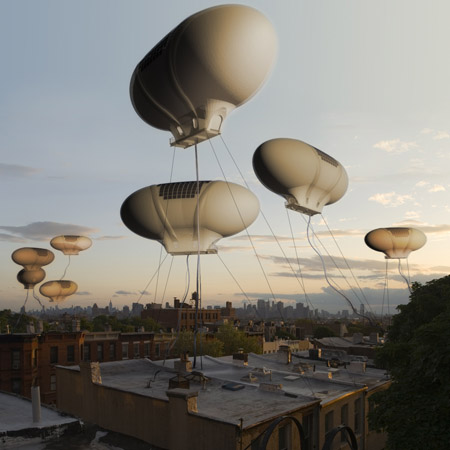 [Image: Courtesy of Studio Lindfors].
[Image: Courtesy of Studio Lindfors].For a recent design competition called What if New York City..., architects and city planners were asked:
- What if New York City were hit by a Category 3 hurricane? What if the most densely residential city in the country loses hundreds of thousands of homes in a few hours? What if millions are left with nowhere to live, to work, or to go to school? What if subways flood, streets close, and whole neighborhoods are submerged by up to 23 feet of ocean water and battered by 130 mile-per-hour winds? What if New Yorkers need a place to live during years of reconstruction?
Welcome to Cloud City.

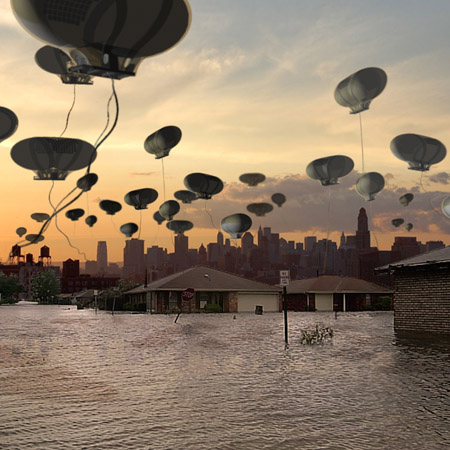
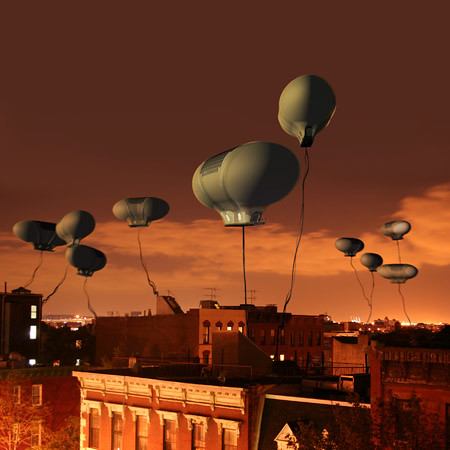 [Images: Courtesy of Studio Lindfors; maybe Will Smith, in I Am Legend should have lived in one of these things... If so, he might have survived].
[Images: Courtesy of Studio Lindfors; maybe Will Smith, in I Am Legend should have lived in one of these things... If so, he might have survived]."Though perhaps an unusual proposal," we read, "Cloud City is literally an uplifting experience that will allow communities to remain intact as they pull themselves out of the rubble."
It's an Archigram-like instant city in the sky:
- The homes can be rapidly deployed with minimal site preparation. They are intended to ‘plug in’ to existing utility services, and can be deployed by a team of four workers in roughly an hour. Once airborne, the floating homes allow construction crews below to work unimpeded, speeding up the recovery effort. This in turn reduces cost overruns and unnecessary delays.

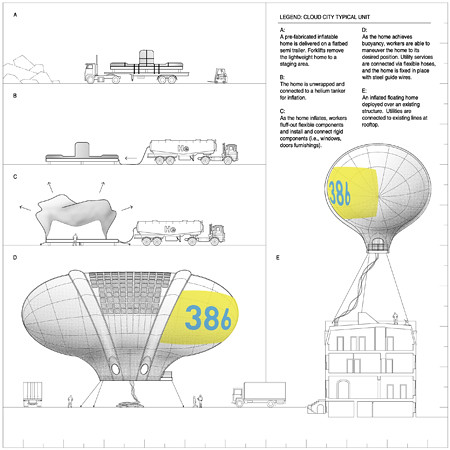 [Images: Courtesy of Studio Lindfors].
[Images: Courtesy of Studio Lindfors].As the architects themselves explain, the blimps are a kind of emergency city, held in reserve:
- Inflatable homes would be pre-fabricated and stored in warehouses for deployment as required. Each home consists of three basic components: an inflatable bladder, a rigid core, and a metal and wood platform. The bladder would consist of two compartments, filled with pressurized helium (which is non-combustible). The pressurized gas would give shape to the tailored and stitched fabric shell, creating an open living space within. Made from recycled polyester fabric, the balloon has a large surface area suitable for mounting of flexible solar panels for generating electricity. Within this living space is a rigid core which contains an efficient kitchenette and bathroom, along with plumbing and electrical services. The 300sf living space is open, and can be configured in many ways, with up to three bedroom spaces suitable for a family of four.
Let's say you're from Kansas City. You haven't been home in two decades. You don't get along with your family anymore and, well: you just don't want to go back. But then a special occasion comes up and you book a flight home.
The whole city has been replaced with blimps.
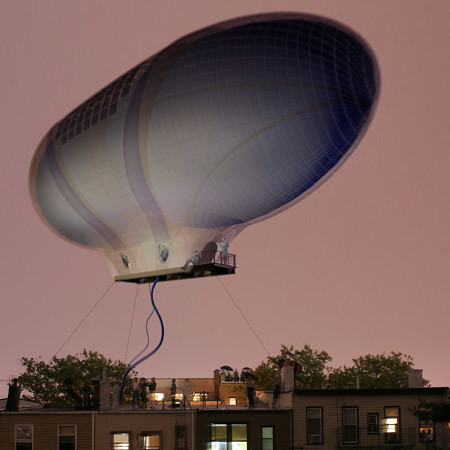 [Image: Courtesy of Studio Lindfors].
[Image: Courtesy of Studio Lindfors].You hadn't heard about this. Somehow your newspaper just didn't pick it up – the transition was so slow that no one noticed – or you simply missed that article, but, either way, you're stunned. Everyone is up in the sky.
There are no streets. You see your dad – in fact, he sees you – waving down from a well-tethered terrace. He's barbecuing something and drinking Diet Coke. No one pays property tax, just a small tethering fee. They grow their gardens on secondary platforms that drift around like balloons in a parade. Only one falling death has been reported in the last two years.
The blimps themselves are bulletproof.
They are suburbs in the sky.
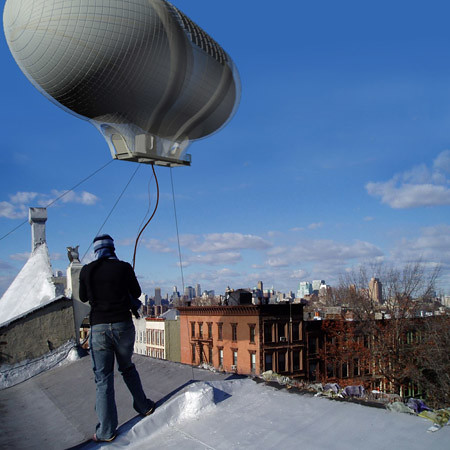 [Image: Courtesy of Studio Lindfors].
[Image: Courtesy of Studio Lindfors].In any case, read more about the project at Studio Lindfors's site – and don't miss the other competition entries, some of which are also worth posting.
No comments:
Post a Comment